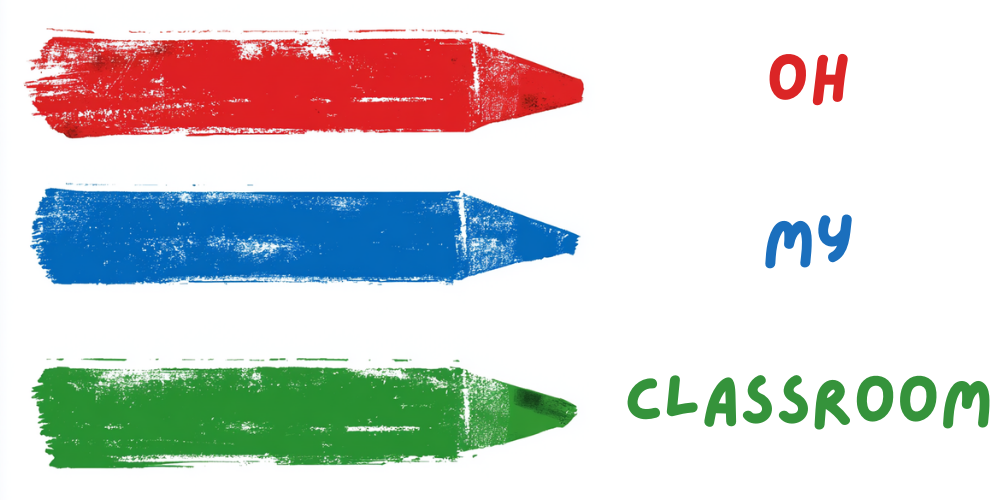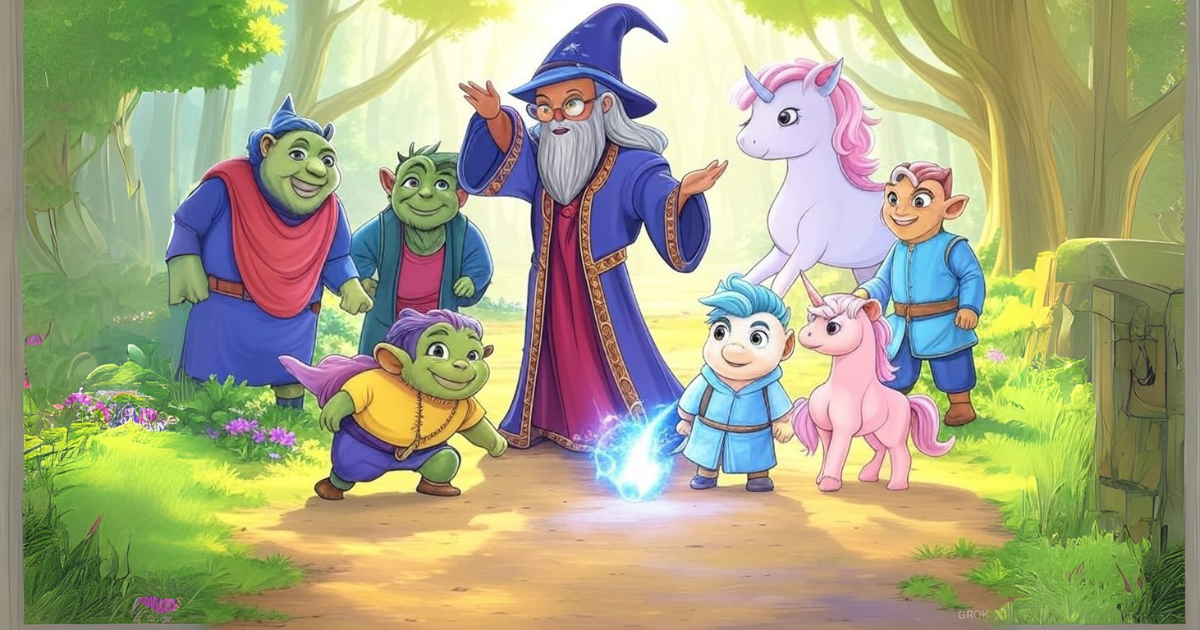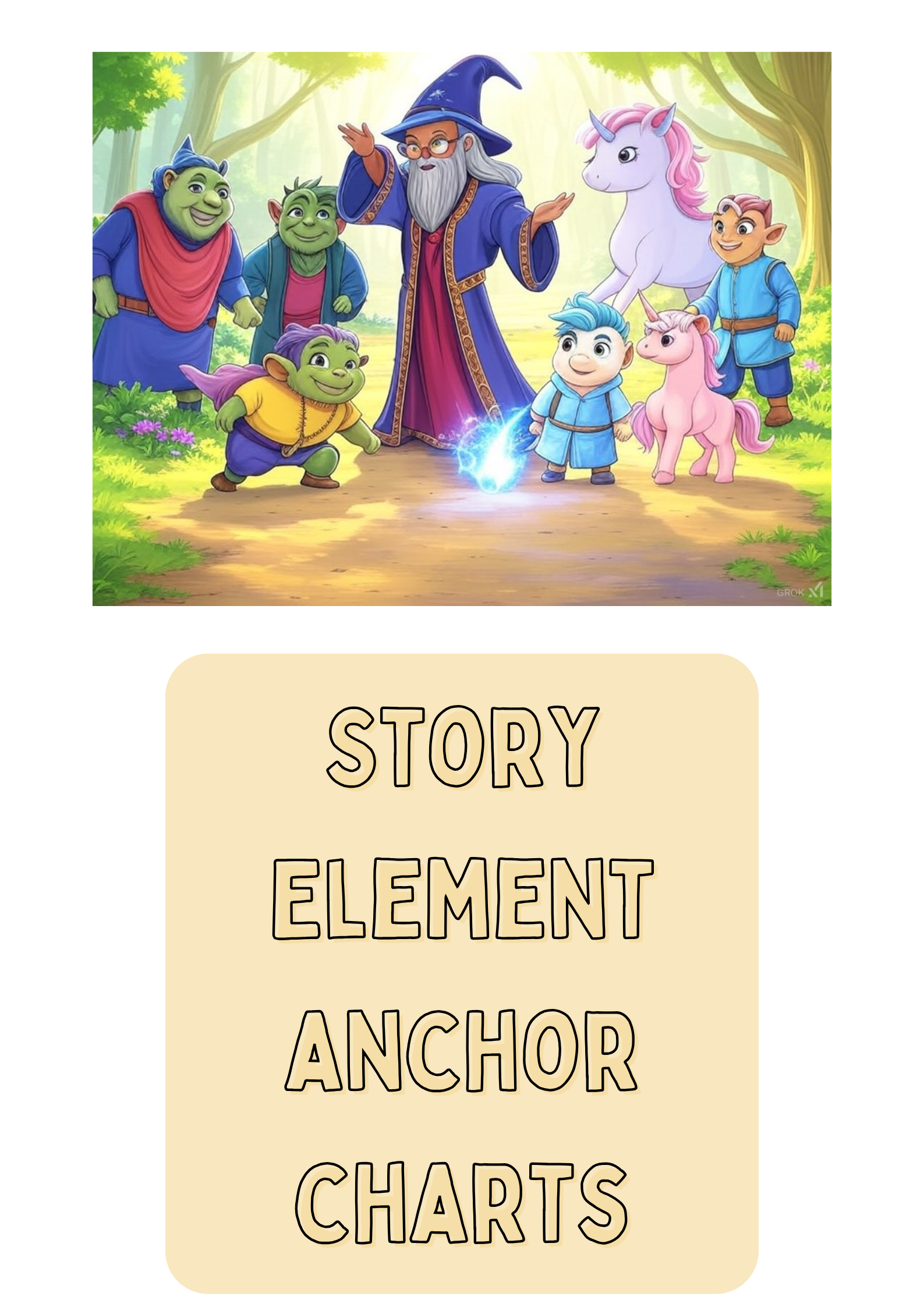Top 12 Kindergarten Reading Skills For Comprehension
Are you ready to unlock the magical world of reading for your class? With the right skills, this journey can be thrilling and informative. Many assume reading is just about sounding out words, but it’s so much more!
In kindergarten, reading comprehension is the secret sauce that enhances literacy. By fostering these skills early, you’re setting your kids up for lifelong success. Let’s embark on this exciting adventure together!
After reading, please feel free to download our Story Element Anchor Charts. There are 2 versions – one for display on a screen and one for printing.
1. Understanding Titles, Authors, and Illustrators
We all know that a book’s title offers clues about the story? But do your kids?
Make sure to teach your class to identify the title, author, and illustrator—the gateways to an adventure. Knowing these helps them connect more deeply with the text – but also builds early reading comprehension skills.
Explain how authors create stories, and illustrators bring them to life with images. This understanding nurtures a respect for creative expression.
Fun Tip: Encourage kids to create their own “books,” choosing a title, ‘writing’ a story, and drawing pictures!
2. Character and Setting Recognition
Characters and settings are essential parts of a story. Ask your kids, ‘Who is this story about?’, ‘Where does it take place?’ for a basic understanding. Ask deeper questions to promote imagination deeper engagement for those who are confident – “What do you think this character is thinking?” or “Could this story happen in space/summer/etc? – Why not?”.
Knowing the characters and setting helps children visualize and relate to the story. It’s like watching a movie unfold in their mind!
Story Time Exercise: After reading, have your kids draw the main character and setting.
3. Recognizing the Problem and Solution
Every good story has a problem to solve. By identifying the problem and solution, children learn critical thinking. ‘What challenge does the character face? How do they overcome it?’ Identifying problems and solutions also helps kids build language skills, increasing their vocabulary as they go.
These discussions help build resilience and problem-solving skills. In time, children may even start predicting solutions before they read them.
Try This: Pause midway through a story and ask your kids to guess the ending!
4. Main Idea and Supporting Details
Understanding the main idea is like finding the heart of the story. What’s the story really about? Discuss this with your kids. There is usually (but NOT always) a BIG clue on the front cover!
The tricky part for kindergarten kids can often be finding details that support the main idea. Help your kids learn to do this by reading together with them and asking as you go – “Does this help build the main idea?”. It’s a fantastic way to develop comprehension skills.
Activity Suggestion: After reading a book, ask your kids to summarize the story in one sentence.
5. Making Predictions and Inferences
Predicting and inferring are advanced listening skills. When you pause and ask, ‘What do you think will happen next?’ it activates a child’s natural curiosity. This is, in my experience, where kids develop their love of reading. Kids LOVE a twist in a story and once they start to get an idea for how stories unfold they will happily spend hours (OK, minutes :p) guessing how the story ends. After a few guesses, they are super excited to read and see if they’re right!
Prediction and inferencing skills encourage critical thinking and empathy, understanding emotions and motives in stories. There are even a number of studies that suggest these skills can improve a child’s social and emotional well-being!
Prediction Practice: Choose a cover image and predict the story within!
6. Fiction vs. Non-Fiction
Teaching kids to differentiate between fiction and non-fiction expands their world – and their reading choices. Fiction ignites imagination; non-fiction opens doors to real-world knowledge. While each child will have their favorite, try to encourage them to read both as this will help deepen their overall reading comprehension skillset.
Show them how to look for clues. Is the story about talking animals or real facts? This skill helps them understand genres and contexts.
Reading Game: Mix a few book covers and let them decide which ones are fiction or non-fiction!
7. Visual and Contextual Clues
Another tricky skill to master, but super important. Illustrations and context clues are extremely helpful learning tools. They guide understanding, interpretation and are tremendous vocabulary builders.
Ask your kids to look at pictures and guess what’s happening. These clues can reveal much more than words alone – in fact they can even help teach new words without having to ask what for help!
Interactive Activity: Cover some text and use images to tell the story!

The man was tired after climbing the mountain.
“I feel exhausted!” he said after he got his breath back.
What do you think exhausted means?
8. Retelling Stories
Retelling stories in their own words encourages creativity and understanding. It also boosts memory and communication skills.
After reading, ask your kids to recount what they remember about the story. It’s a great way for them to express comprehension.
If your kids find this too easy – challenge them to take one element of the story and change it! How would it change the story if it were “The Three Little Dogs”? Or What if “The Hare And The Tortoise” was set in space?
Role-Play Fun: Re-enact the story with simple props or costumes!
9. Engaging with Rhyme and Rhythm
Rhymes and rhythm can turn reading into an exciting, musical performance. They make reading fun and memorable for children!
Books with rhymes teach phonemic awareness and aid in language development. Clap or tap along to rhythms for added fun.
Dr. Seuss is the King of rhyme, though there are countless authors who also engage in poetic writing styles – Eric Carle’s “Brown bear, brown bear” or Lynley Dodds “Hairy MacLary” series come to mind.
Sing-Along Suggestion: Find a fun story with a clear rhythm and turn it into a sing-along!
10. Asking Questions and Encouraging Discussion
When children ask questions, it means they’re engaged. Encourage them to become little detectives of the story.
Questions deepen understanding and participation. Don’t worry if they get stuck, brainstorming together is just as important.
It is also a good idea to have kids try to relate stories to their own lives. Even if all they can tell you is “I saw a dog once…” it is the beginnings of comprehension and seeing that books can play a part in explaining the world to us. Just don’t let them get TOO off track!
Question Encouragement: Ask open-ended questions about the story to inspire conversation. This is also an excellent suggestion for parents when they read at home too.
11. Make Reading a Regular Habit
Create a routine where reading becomes a habit. Regular reading time can become a favorite time of day.
Before lunch stories or morning reading sessions make for peaceful happy moments.
Routine Suggestion: Dedicate a cozy reading corner in class as a safe retreat.
12. Encouraging Independent Reading In Kindergarten
Fostering independence in reading builds confidence. Let them choose books and explore them on their own.
Your kids will enjoy the freedom to pick stories, promoting responsibility and interest.
Independence Tip: Start a ‘reading club’ where they can share what they read with friends.



